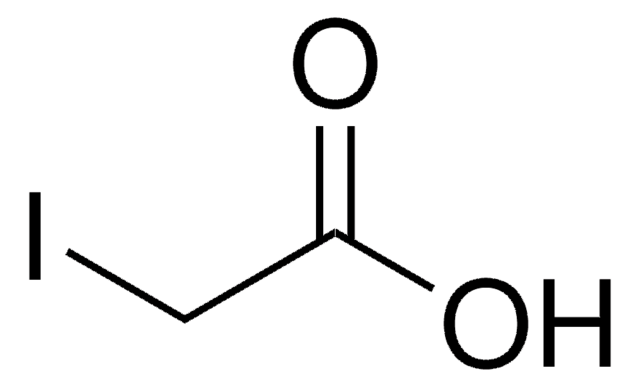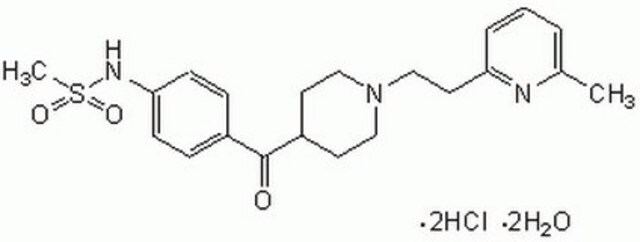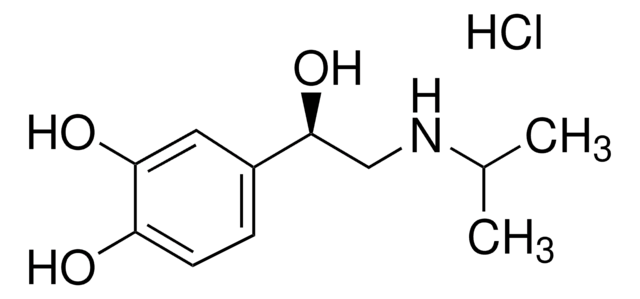M5060
E-4031
≥98% (HPLC), lyophilized powder
Synonym(e):
N-[4-[[1-[2-(6-Methyl-2-pyridinyl)ethyl]-4-piperidinyl]carbonyl]phenyl]methanesulfonamide dihydrochloride
About This Item
Empfohlene Produkte
Assay
≥98% (HPLC)
Form
lyophilized powder
Lagerbedingungen
desiccated
Methode(n)
cell culture | embryo: suitable
Farbe
white
Löslichkeit
H2O: soluble
Lagertemp.
−20°C
SMILES String
Cl.Cl.Cc1cccc(CCN2CCC(CC2)C(=O)c3ccc(NS(C)(=O)=O)cc3)n1
InChI
1S/C21H27N3O3S.2ClH/c1-16-4-3-5-19(22-16)12-15-24-13-10-18(11-14-24)21(25)17-6-8-20(9-7-17)23-28(2,26)27;;/h3-9,18,23H,10-15H2,1-2H3;2*1H
InChIKey
ZQBNWMFBOSOOLX-UHFFFAOYSA-N
Anwendung
- human ether-a-go-go-related gene (hERG) blocker in human-induced pluripotent stem cell-derived cardiomyocytes (hiPSC-CMs)
- IKr blocker in long QT syndrome (LQTS) induced pluripotent stem (iPSCs) embryoid bodies
- IKr blocker in rat ventricular myocytes
Biochem./physiol. Wirkung
Leistungsmerkmale und Vorteile
Lagerklassenschlüssel
11 - Combustible Solids
WGK
WGK 3
Flammpunkt (°F)
Not applicable
Flammpunkt (°C)
Not applicable
Persönliche Schutzausrüstung
Eyeshields, Gloves, type N95 (US)
Analysenzertifikate (COA)
Suchen Sie nach Analysenzertifikate (COA), indem Sie die Lot-/Chargennummer des Produkts eingeben. Lot- und Chargennummern sind auf dem Produktetikett hinter den Wörtern ‘Lot’ oder ‘Batch’ (Lot oder Charge) zu finden.
Besitzen Sie dieses Produkt bereits?
In der Dokumentenbibliothek finden Sie die Dokumentation zu den Produkten, die Sie kürzlich erworben haben.
Kunden haben sich ebenfalls angesehen
Unser Team von Wissenschaftlern verfügt über Erfahrung in allen Forschungsbereichen einschließlich Life Science, Materialwissenschaften, chemischer Synthese, Chromatographie, Analytik und vielen mehr..
Setzen Sie sich mit dem technischen Dienst in Verbindung.












